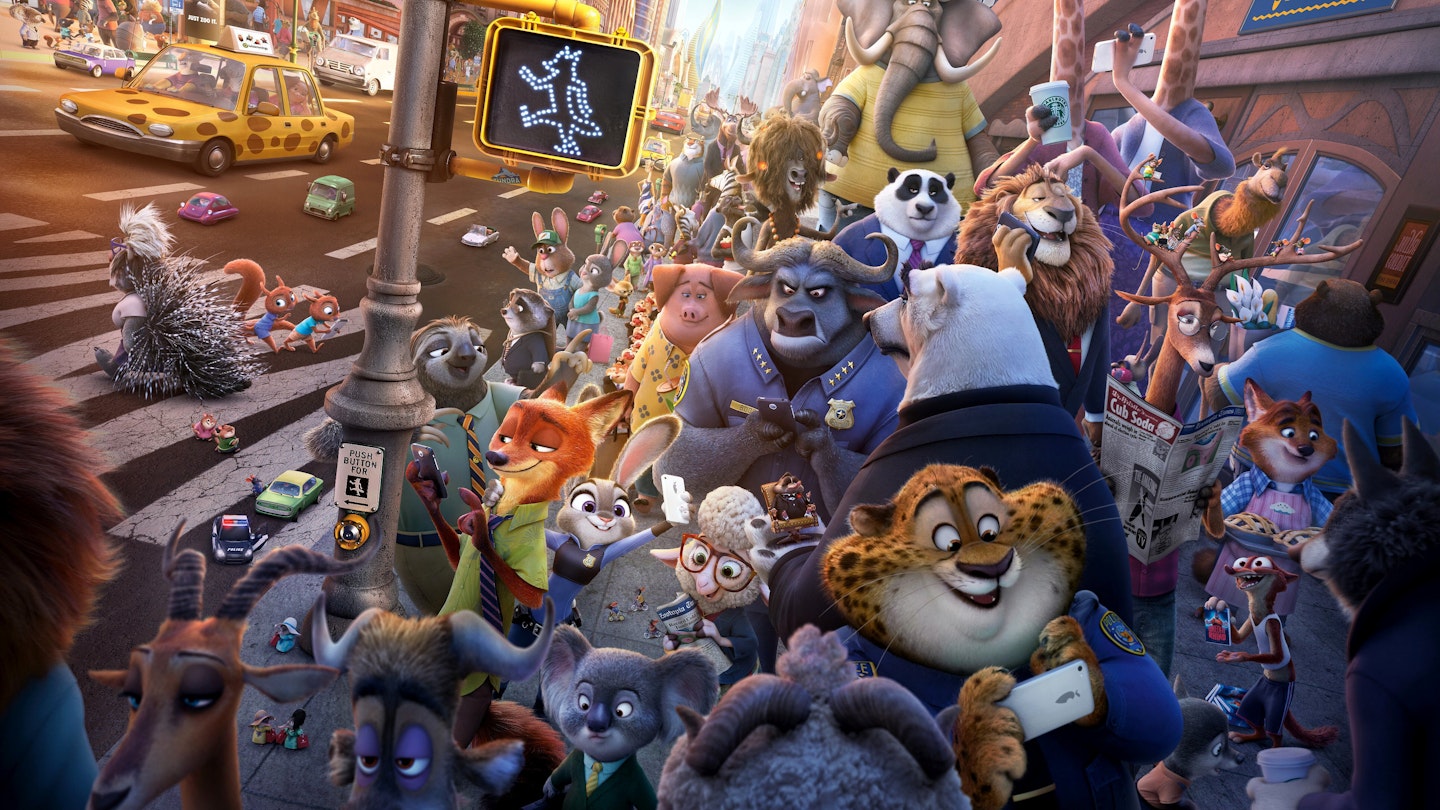
In Zootropolis – known in the US as Zootopia but renamed here for exciting copyright reasons – Disney have created a world where mammals have evolved beyond their primitive backgrounds to form a bustling civilisation. There’s no manure here: this is a gleaming metropolis, where the animals wear clothes, go to mundane office jobs, and – crucially – do not eat each other.
Already a hit in the States, and now about to make some various animal noises here, we sat down with Zootropolis directors Byron Howard and Rich Moore to talk through never-before-seen concept art, and explain how they created an entirely animal city.
Wild life
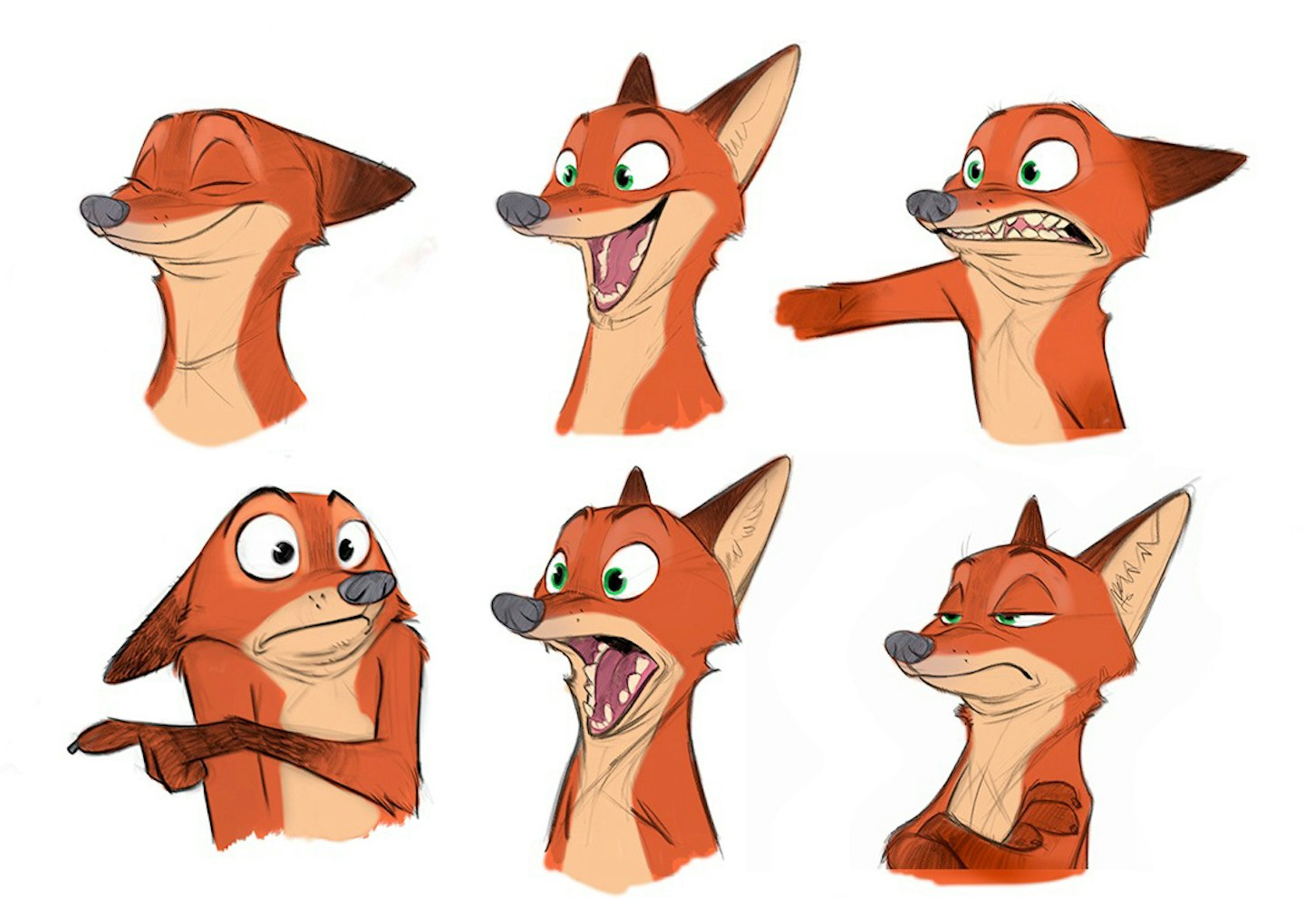
Byron Howard: Rich and I grew up on Disney animated films. The Jungle Book was the first movie Rich ever saw. I grew up on Robin Hood. There’s a lot of Robin Hood DNA in Nick Wild. There’s something about classic Disney design that we love, that really appeals. This drawing is done by Cory Loftis, our chief character designer.
Rich Moore: You can see Cory’s going for different expressions here. He’s playing around with the mouth shape, the teeth, getting the shoulders up, trying to find where the CG character is going to land. Then the modellers will take this information and start to sculpt the character in the computer, translating these amazingly appealing 2D designs [into 3D].
Hopps to it
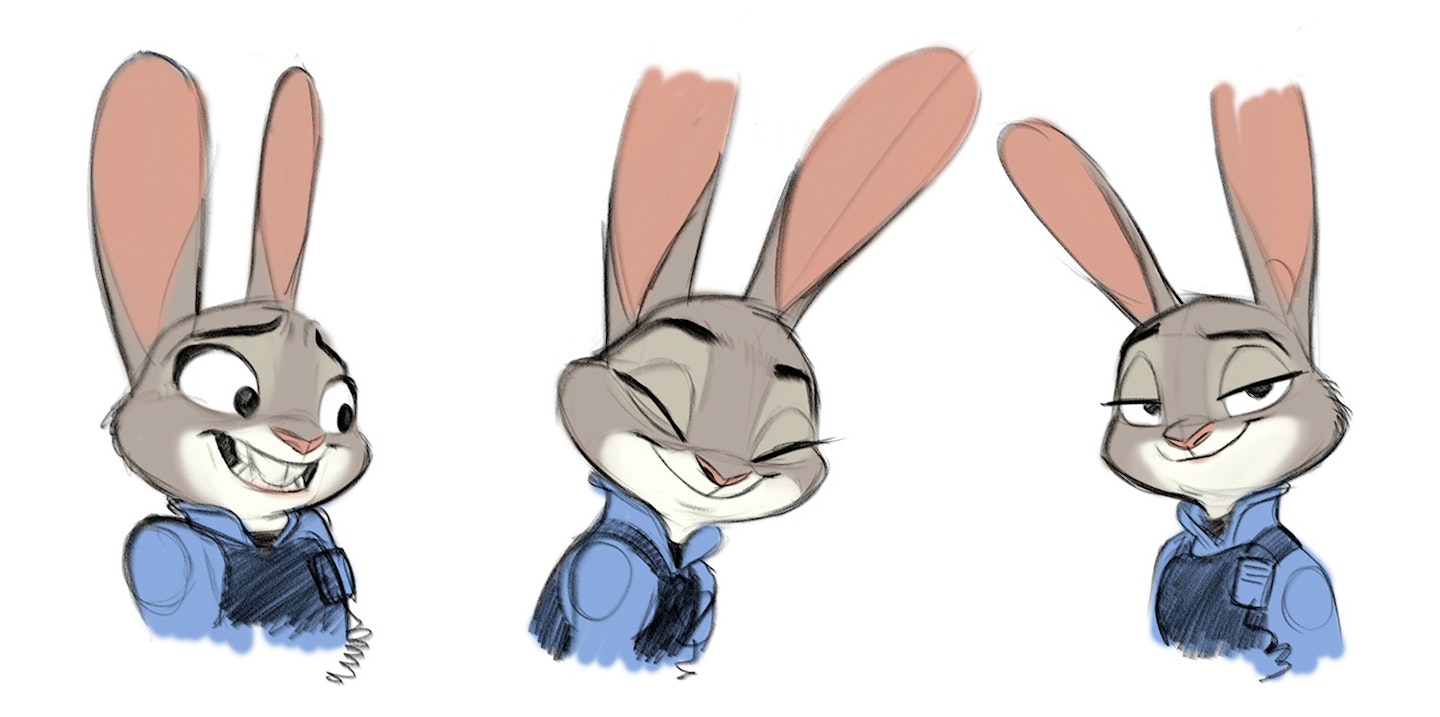
Byron Howard: The animators studied what makes real animals appealing and how real animals communicate. They looked at how rabbit noses are constantly moving if they’re nervous or excited. A rabbit does something called ‘binkying’ where they’ll leap in the air and twist about completely 180 degrees and go off in the other direction. Judy Hopps does that in the movie. She is anthropomorphic – she behaves like a human – but there is still a lot of animal DNA in there.
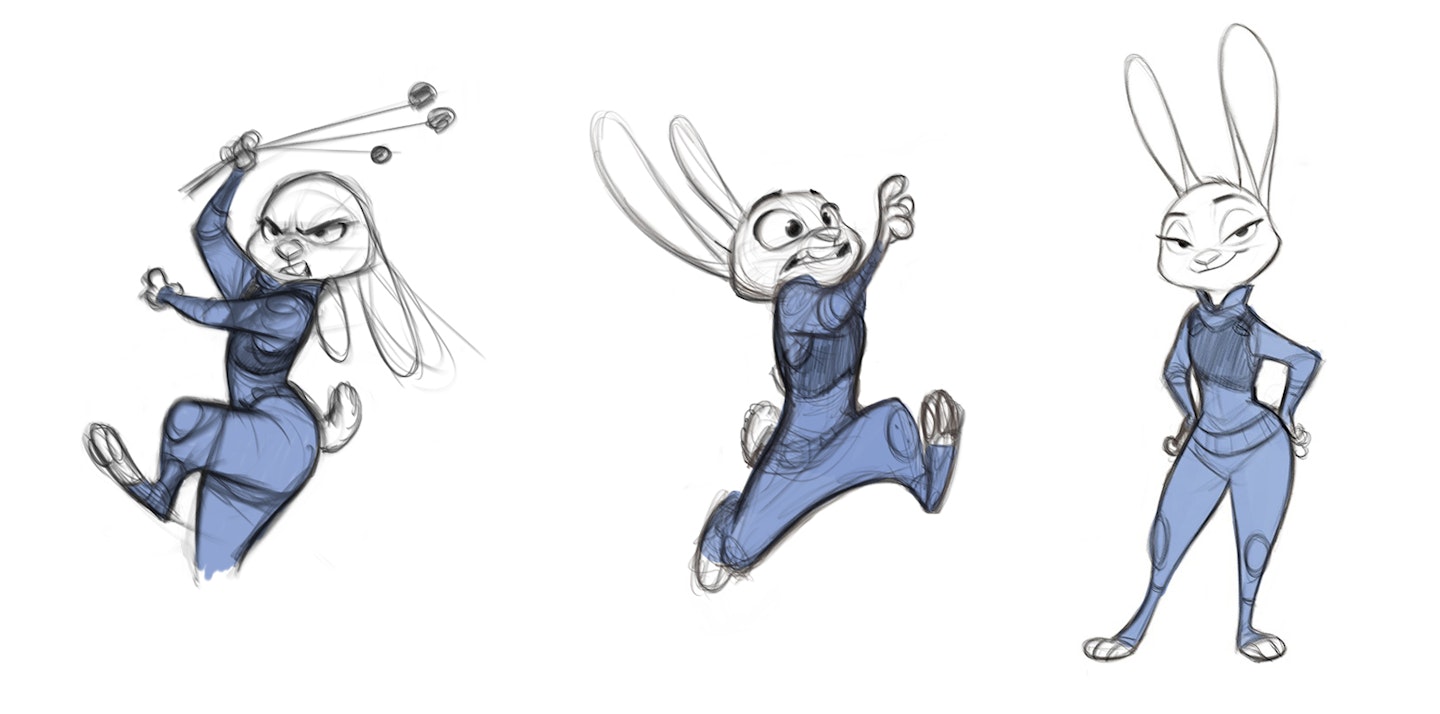
Rich Moore: For a Disney animator, Judy Hopps is a gift. It’s a holy grail. It takes all those things that animators love about Thumper [from Bambi], and even the rabbit characters from Robin Hood, to make a classic Disney heroine. She didn’t take a lot of exploration.
Byron Howard: She landed really quickly.
Animal magic
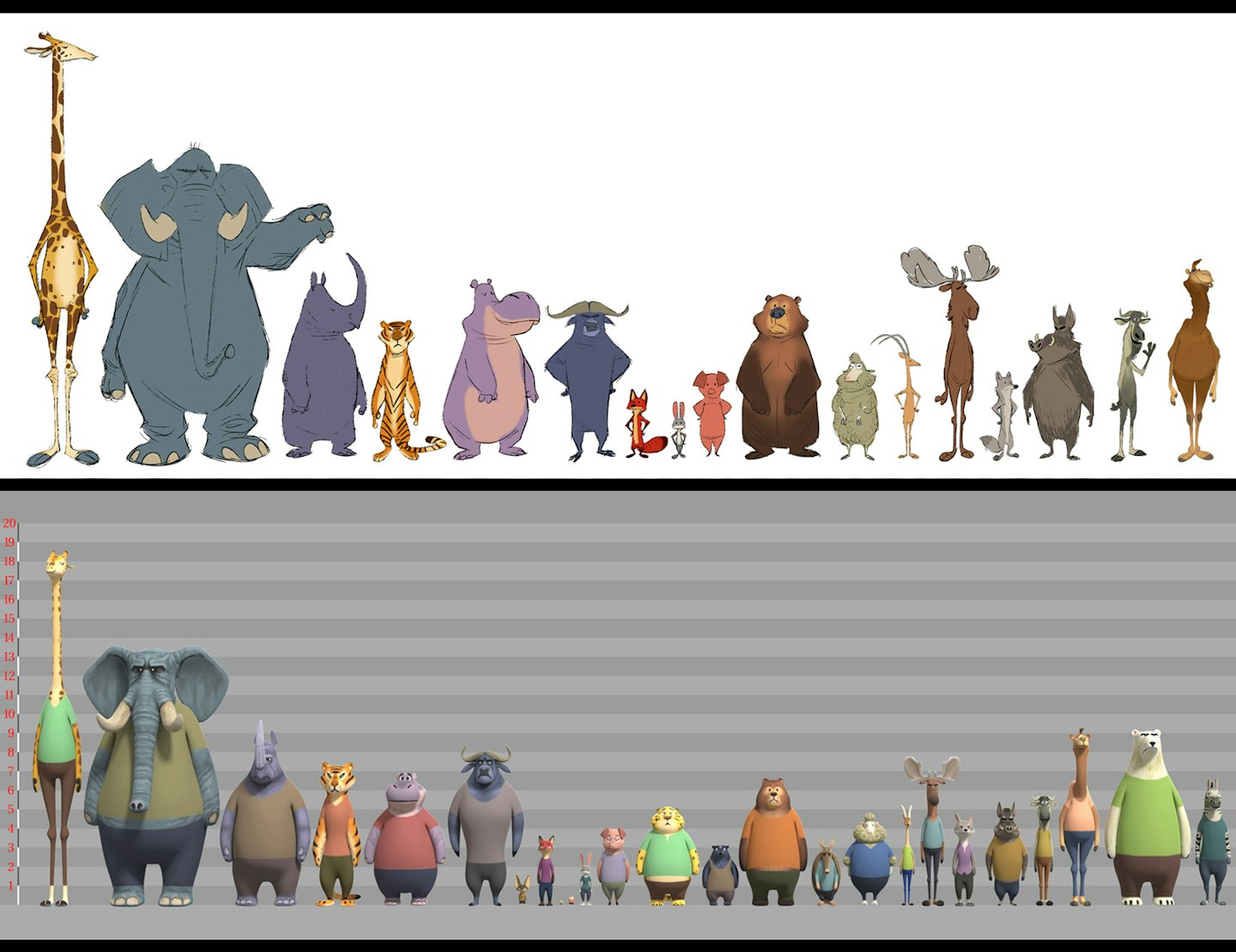
Rich Moore: The animators need to know how cartoony it is gonna go. These drawings are describing to the modellers, who build the rigs, just how far it goes. They need to know how far we’re going to push the envelope.
Byron Howard: The main characters set the boundaries for how broad the film's going to be. What I love about Disney is hitting this sweet spot, this middle ground, where you have great cartoonish visual language, but there’s enough reality there so you can relate to it. It doesn’t break that sense of believability. The characters aren’t made of rubber. They feel like a fox, they feel like a rabbit.
Rich Moore: It’s also a good indication to the animators what the tone is, what the acting is gonna be like. We call these module sheets. Animators have them pinned up all over their office. It’s a good guideline. They become touchstones for where to go with the acting.
Hobbiton in the Midwest
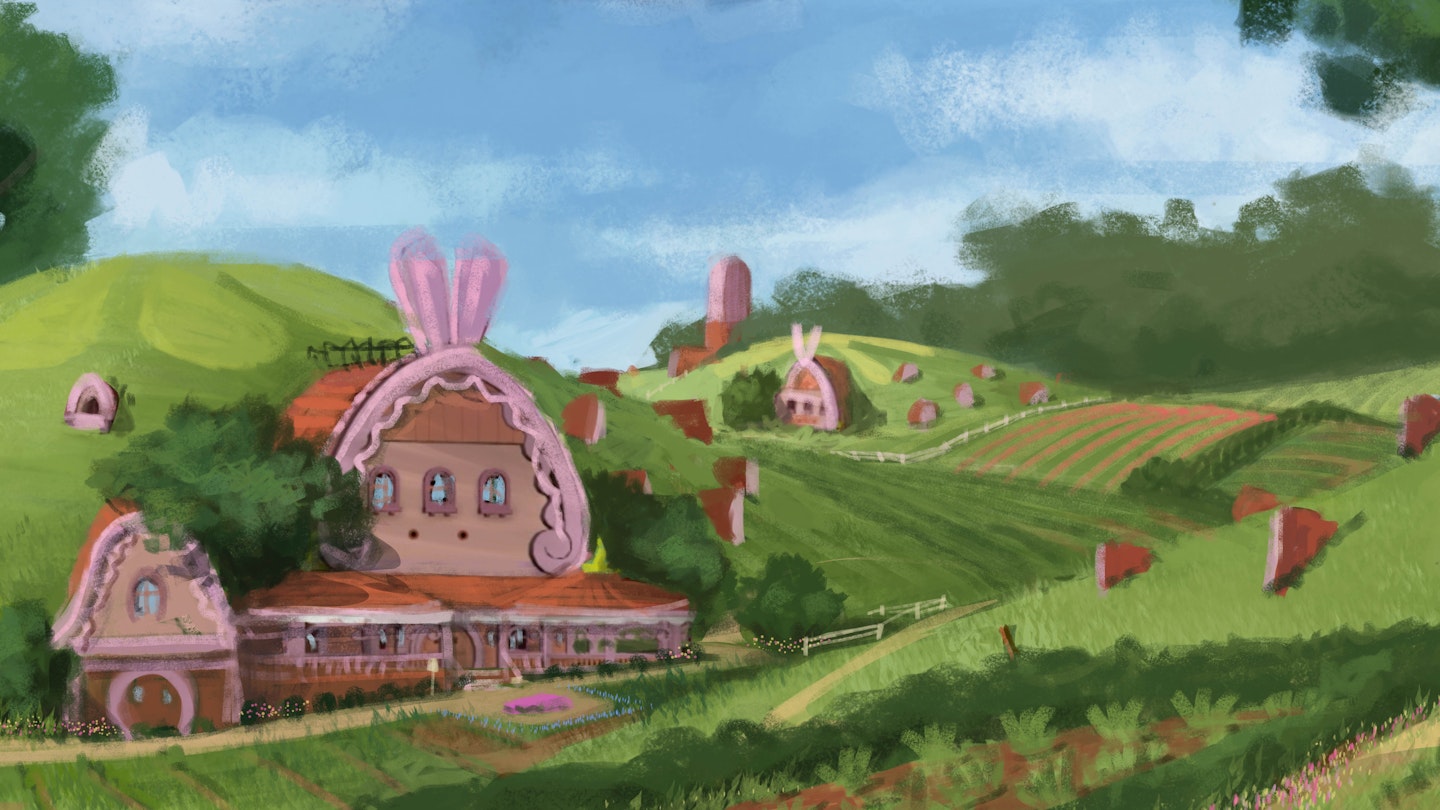
Byron Howard: This is Bunnyburrow. It began like this – more cute-ified. There’s a point in an earlier version of the film where you went inside Judy’s house, and she has hundreds of brothers and sisters. It was a combination of a country farmhouse with a small city.
Rich Moore: And it had tunnels, lots of little rooms and little compartments like a maze.
Byron Howard: It was great fun. But then we moved away from it slightly, and downplayed the crazy design.
Rich Moore: We wanted it to be more rural. In the States, we would [tell our designers] it should be more like Kansas. Y’know, Smallville, where Superman was raised. The colour palette went from these Easter-like pinks and pastels, to something more agricultural.
Singin' in the rainforest district
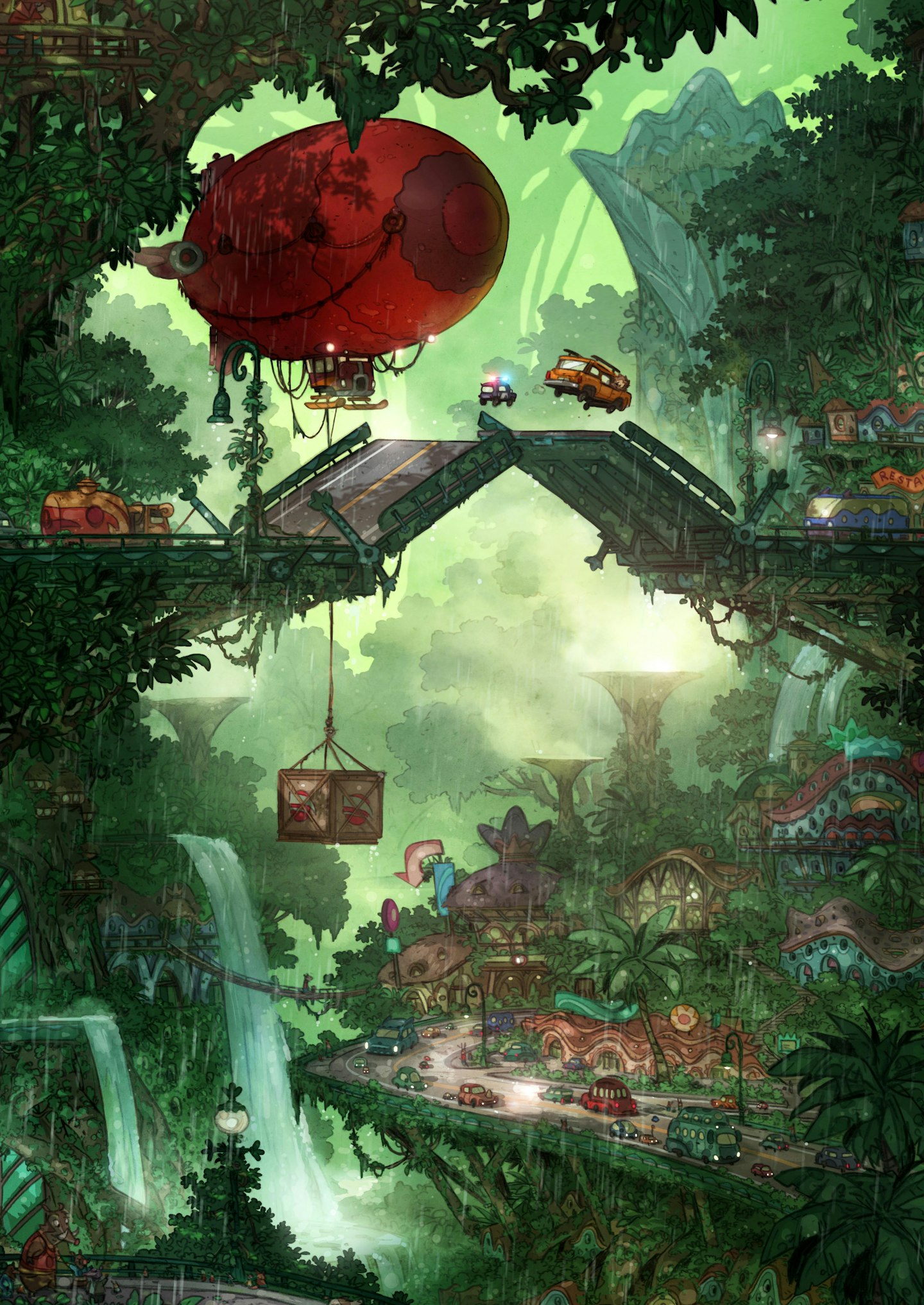
Byron Howard: This is one of the early paintings, of the rainforest district. Matthias [Lechner] was the chief designer of environments in this world. This is one of the first pieces where we went, “that looks exactly like we want it to look”. He did such a nice job in combining naturalistic elements with beautiful South American inspired buildings.
What you don’t see here is that these huge trees are not actually trees. They’re huge steam trees with pipes that take the water from down below, then bring it up above and the artificial sprinklers diffuse it in the air. Because Matthias is German, he’s always thinking about how to make things really work (laughs). He was the perfect choice. Everything in the city really functions.
I’m walking here!
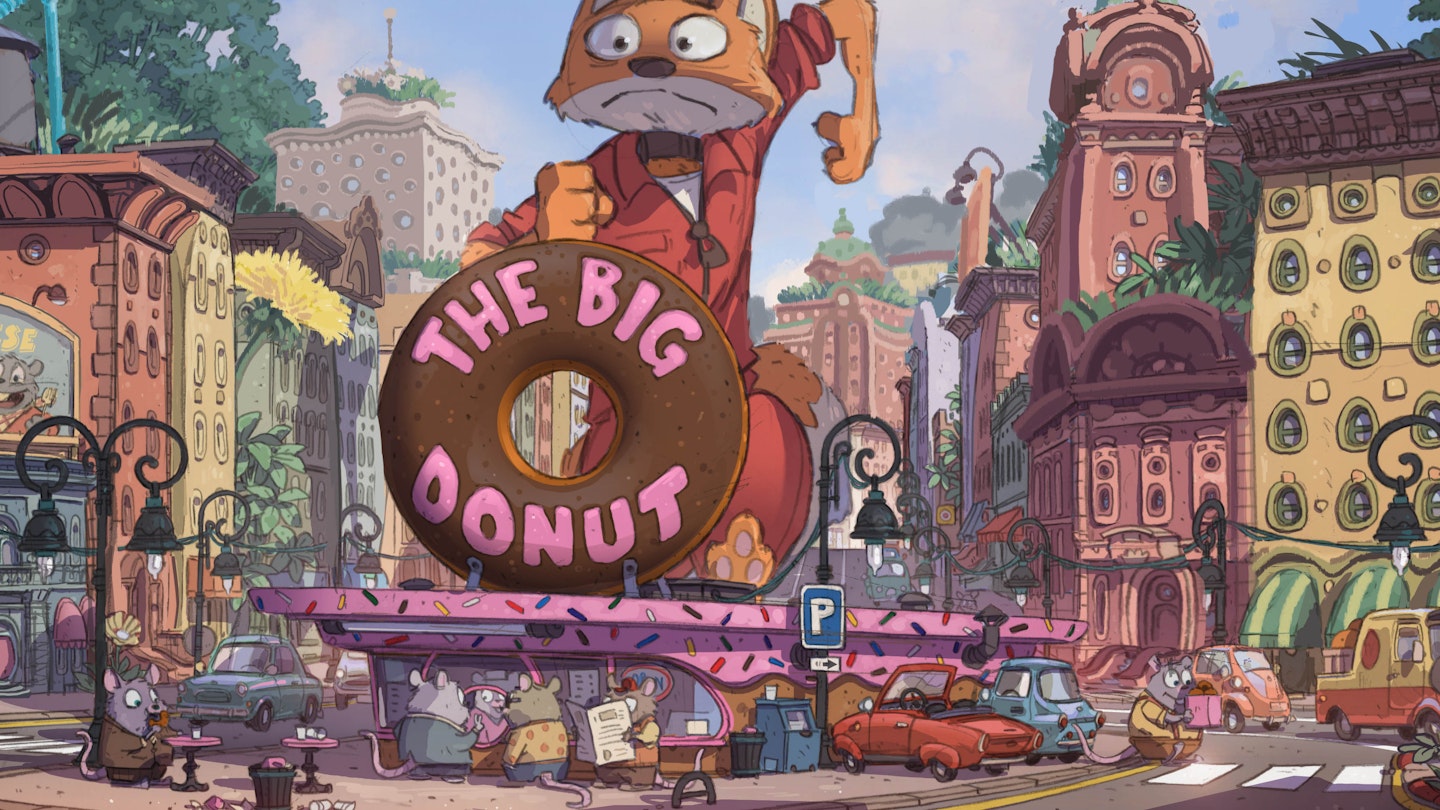
Rich Moore: This is Little Rodentia. It’s like Greenwich Village, shrunk down.
Byron Howard: Greenwich Village has this sort of charm to it. Old-school New York. Many of the different areas in the city are influenced by European cities, Asian cities.
United Animal Emirates

Byron Howard: This is Sahara Square. There used to be whole sequences that took place in this 1000-foot hotel, The Oasis.
Rich Moore: We don’t really do the Dubai–inspired stuff which was there originally. There were casinos and real high-end fashion designers. Like Beverly Hills.
Byron Howard: We spent a lot of time in Las Vegas researching this. Many, many trips. A lot of money spent (laughs).
Snow business
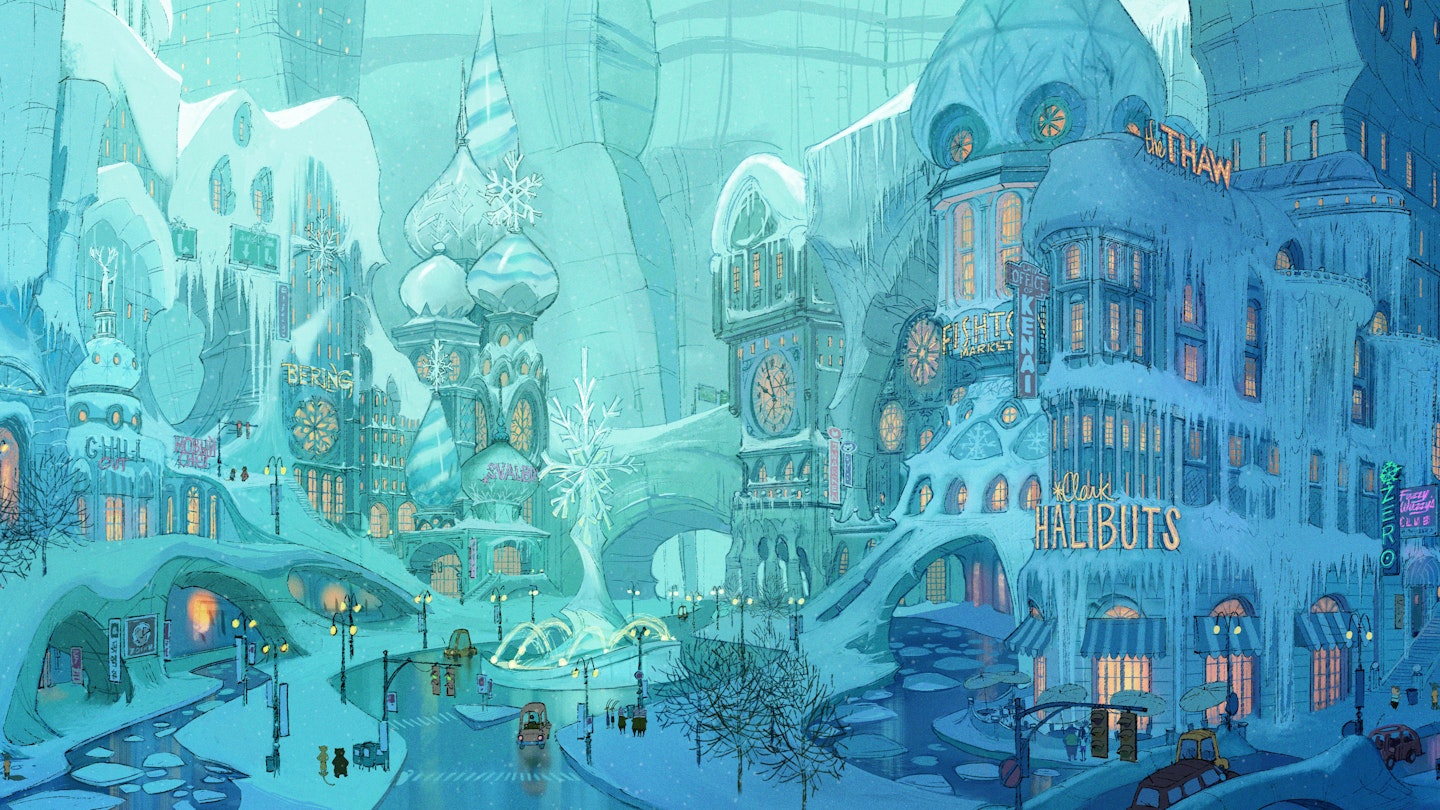
Byron Howard: This is Tundra Town, by Cory Loftis again. You can see some of the Russian influence there. Cory took some of the onion domes from Slavic architecture. Byzantine-looking architecture. We had this philosophy that if you were to squint at any frame of the film, you might think you were looking at a natural environment.
Rodentfrastructure
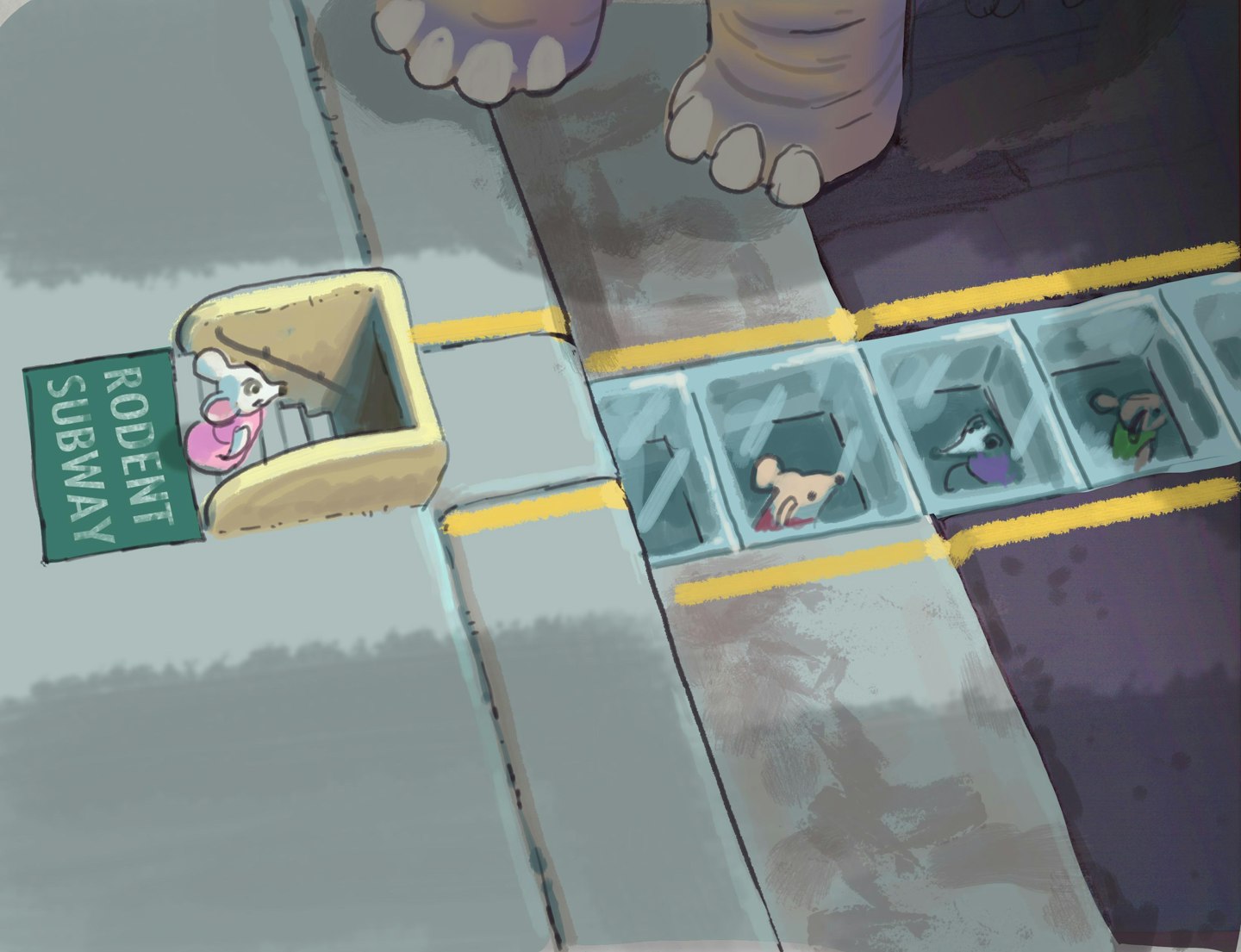
Byron Howard: The infrastructure is all there. We figured out how everything in the city works. But it still all feels whimsical and fantastical. That was always what we were looking for: practical, and interesting.
Research and development
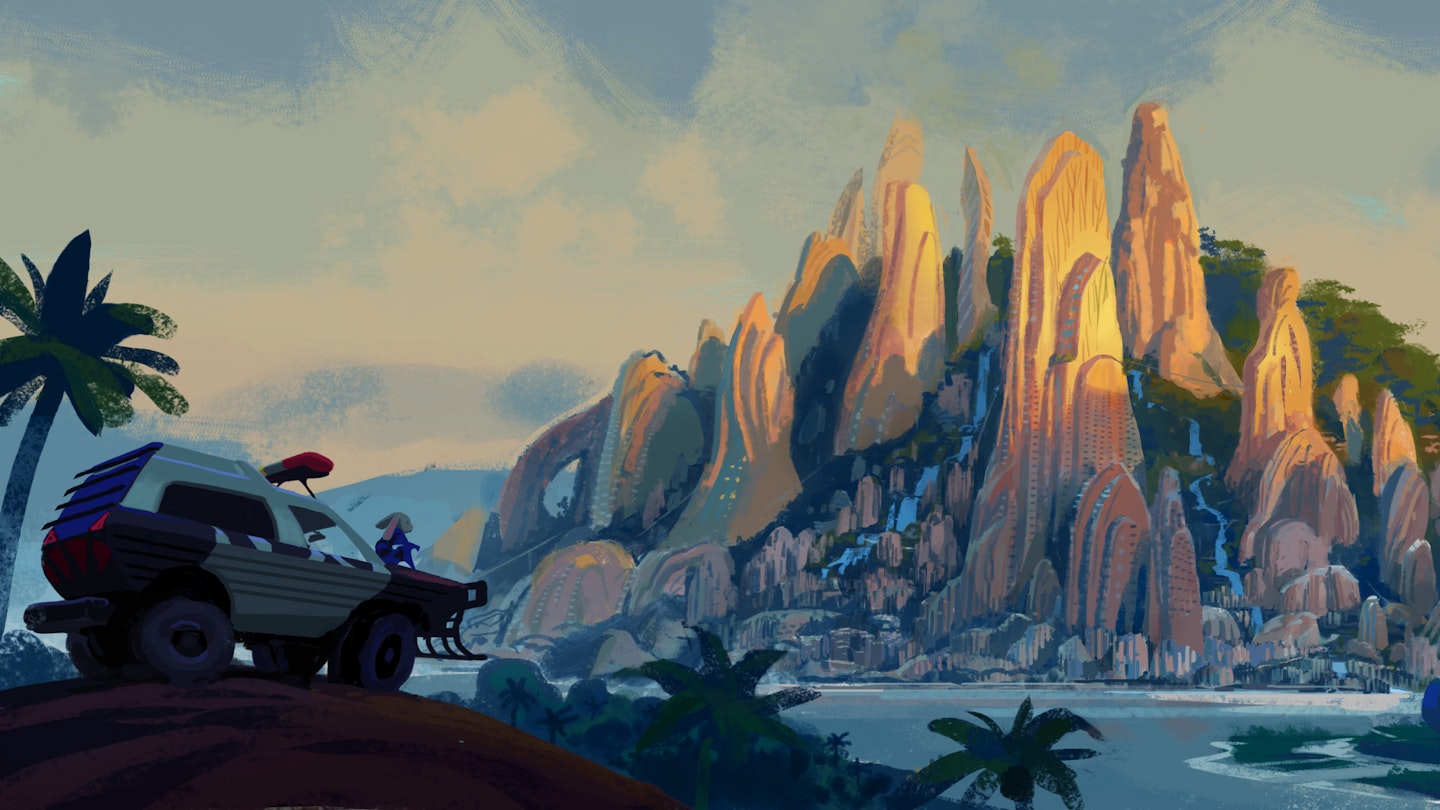
Byron Howard: We went to Africa, we went to Kenya... I’d been to Guatemala years before so I’d seen a bit of the rainforest. Some people had been to Costa Rica. We had thousands of photographs to refer to. Even though they’re cartoons, we always come back to reality because we want to make sure the world feels believable.
Eating habits
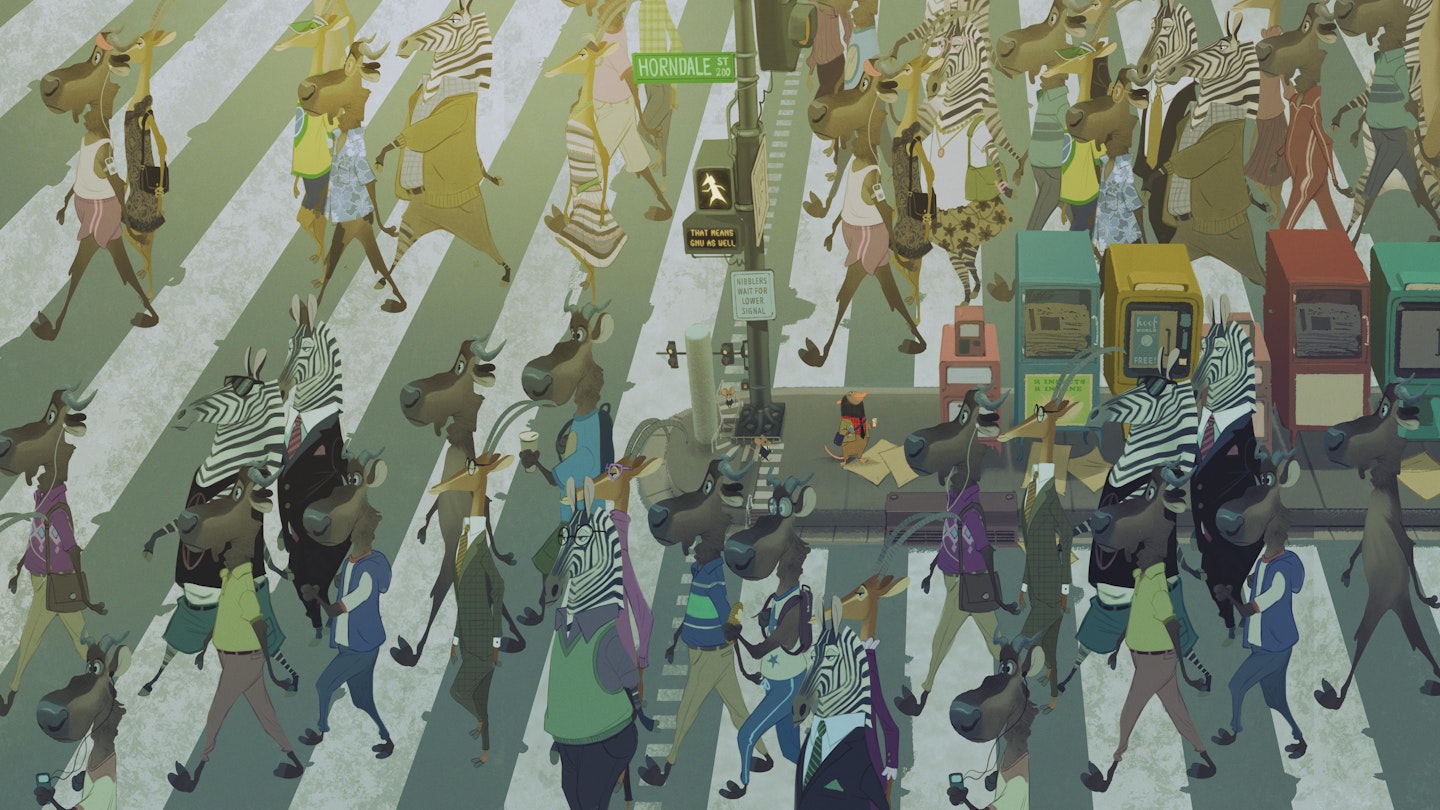
Byron Howard: Not all the animals are vegetarian. The carnivores have Bug Burger. Bug Burger is the most popular fast food joint for carnivores. It’s bug protein. They have cricket chips, grasshopper shakes, cricket burgers
Rich Moore: Insects and fish are not sentient in this world. The guys from A Bug’s Life and Finding Nemo would be edible in this movie. Our characters could be eating Nemo and Dory (laughs)!
Zootropolis is released in UK cinemas on Friday March 25.
